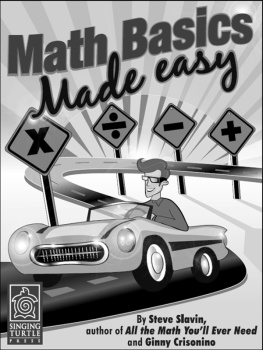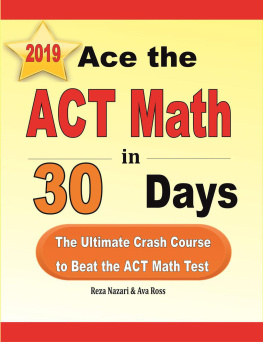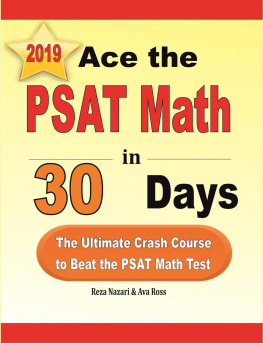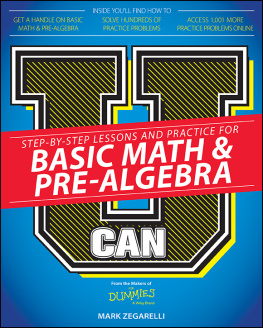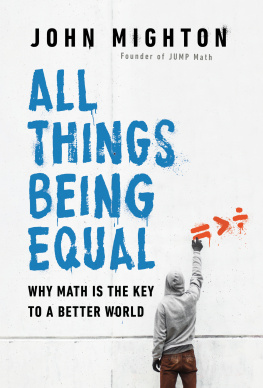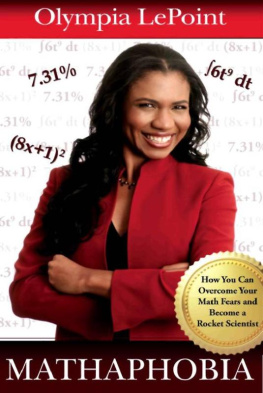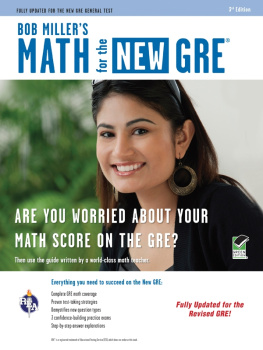Ginny Crisonino - Math Basics Made Easy
Here you can read online Ginny Crisonino - Math Basics Made Easy full text of the book (entire story) in english for free. Download pdf and epub, get meaning, cover and reviews about this ebook. year: 2012, publisher: Singing Turtle Press, genre: Science. Description of the work, (preface) as well as reviews are available. Best literature library LitArk.com created for fans of good reading and offers a wide selection of genres:
Romance novel
Science fiction
Adventure
Detective
Science
History
Home and family
Prose
Art
Politics
Computer
Non-fiction
Religion
Business
Children
Humor
Choose a favorite category and find really read worthwhile books. Enjoy immersion in the world of imagination, feel the emotions of the characters or learn something new for yourself, make an fascinating discovery.
- Book:Math Basics Made Easy
- Author:
- Publisher:Singing Turtle Press
- Genre:
- Year:2012
- Rating:3 / 5
- Favourites:Add to favourites
- Your mark:
Math Basics Made Easy: summary, description and annotation
We offer to read an annotation, description, summary or preface (depends on what the author of the book "Math Basics Made Easy" wrote himself). If you haven't found the necessary information about the book — write in the comments, we will try to find it.
Theres an unspoken weak spot in our society most adults cant do basic math.
A recent U.S. Department of Education study found that American adults are largely unable to calculate tips, understand their mortgage payments, or even figure out their weekly salary when told their hourly wage.
Though we live in a world where numbers, percentages and statistics are tossed at us daily a world that expects us to make sense of these figures 87% of American adults are deemed non-proficient at math, according to a recent Education Department study.
But there is hope. As the scope of this problem has become more publicized, community colleges have moved in to help, offering courses to help adults gain math proficiency. And programs and books have been created to address the issue, too.
Still, most adults need to start their math journey is back at the beginning, and few resources have been developed to address the earliest math skills.
Singing Turtle Press, publisher of the award-winning Algebra Survival Guide, is coming to the rescue, though, with a new book that helps adults master foundational math concepts. Math Basics Made Easy, a new offering in eBook format, teaches adults the four fundamental math operations: adding, subtracting, multiplying and dividing.
These four skill areas are the foundation stones of mathematics, says co-author Steve Slavin. Because most Americans have never mastered these skills, they havent gotten very far in math. And that has closed the door to many high-paying careers.
Slavin should know about these problems. He has devoted his life to teaching math, and to writing books to help people grasp math. Slavin believes that no matter how far behind a person may be in math, its never too late to learn math, even if one must go back to the very first grade.
Math Basics Made Easy presents early math concepts in a format that works for adults. The book offers brief, easily understood lessons with worked-out sample problems, followed by a collection of practice problems for the reader. Answers are provided to all practice problems, so readers get instant feedback on how well they are progressing.
Within each of the four content areas adding, subtracting, multiplying and dividing concepts are taught sequentially, easiest concepts first, most challenging topics last.
The book is heavy on practice because Slavin believes that we learn math by doing math.
The benefit, though, is that anyone who works his way through this book will learn the basics of math and thereby put himself in a position to move on to more challenging topics.
In todays challenging economic times, Math Basics Made Easy offers a gateway to better opportunities for todays job-seeker.
Slavins co-author, Ginny Crisonino, also teaches math daily, serving as Mathematics Chair at Union County College, Cranford, NJ.
The book also gives anyone who never fully understood maths basics a chance to master them, for the books message is that its never too late to learn. A solid self-teaching guide, Math Basics Made Easy offers solid encouragement and competent instruction to anyone with the desire to master maths basic skills.
Ginny Crisonino: author's other books
Who wrote Math Basics Made Easy? Find out the surname, the name of the author of the book and a list of all author's works by series.

